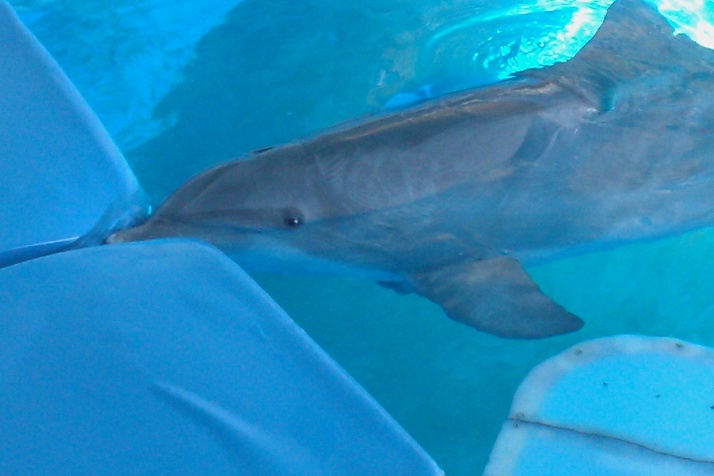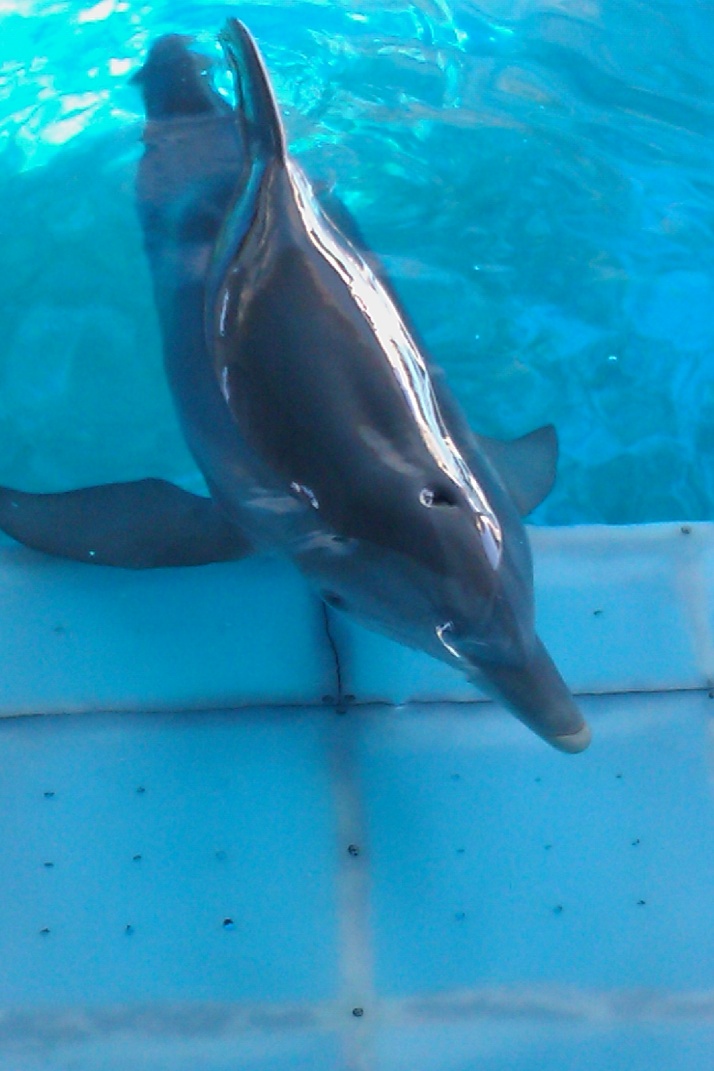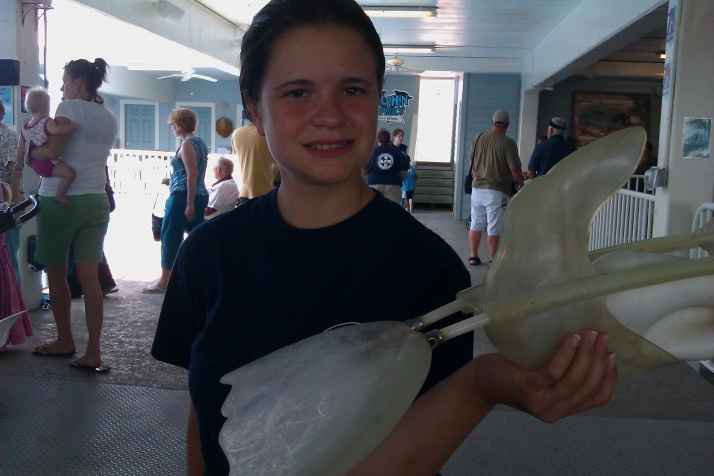
The only manta ray we have here at CMA is just a large ornament-like statue that was used in the movie "Dolphin Tale"
One day when I was doing a mobile prop shift at the Dolphin Deck, an elderly man asked me if we had manta rays on display. I told that we did not have any manta rays in our care because currently we just do not have any room for them here at Clearwater Marine Aquarium to put them in so that they would be cared for. I told him that currently the only animals that are on display at the aquarium are dolphins, otters, sea turtles and certain fish species that are all native to Florida waters. While he was a little disappointed by my answer, he was glad to have his question answered.

Manta ray residing at the Georgia Aquarium (this photo belongs to Georgia Aquarium)
As a lot of you may know, Georgia Aquarium in Atlanta, Georgia is currently the only aquarium in the western hemisphere to ever successfully display a colony of live manta rays in human care (I do know of one aquarium in Japan that has already become the first facility in the entire world to successfully breed these amazing animals in captivity). So the question is that why is Georgia Aquarium the only western aquarium to house manta rays and whale sharks and not other aquarium favorites like SeaWorld or Clearwater Marine Aquarium? This is because both animals are difficult to maintain in human care when it comes to water temperature, dietary needs, and exhibitional space when it comes to thriving in aquariums since both animals are pretty large by nature. So to see how and Why Georgia Aquarium is currently the only western facility to house two dream animals (manta rays and whale sharks), let’s take a look at Georgia Aquarium’s Ocean.

Ocean Voyager exhibit at Georgia Aquarium (this photo is NOT mine)
On the money issue, the Ocean Voyager Exhibit costed Georgia Aquarium about $20 million to build from top to bottom. According to Georgia Aquarium’s site the exhibit contains about more than 6.3 million gallons of salt water and an estimated 4,574 square feet of exhibition space. Oh, the water temperature is also anywhere from 74-76 degrees, the perfect water temperature that these tropical animal usually prefer out in the wild. One of the reasons why most aquariums prefer to keep water temperature warm than what most aquarium goers think is because they keep it at the perfect water temperature that the animals prefer. Like for example, the water temperature at SeaWorld’s Shamu Stadium is about 55 degrees and this is because killer whales can usually be found in cold temperate or polar waters throughout the world. Another important thing when it comes to maintaining manta rays and whale sharks in human care in Atlanta is the dietary needs. While the whale sharks are given a combination of both small fish and lettuce, the rays are given a variety of fish that they would feed on out in the wild. So in conclusion, it’s safe to say that Georgia Aquarium is currently the only facility in the western hemisphere to successfully maintain both whale sharks and manta rays in human care although, both animal species have been known to be extremely difficult to keep in captivity because of their large volume of needs.

Look out world because Clearwater Marine Aquarium is dreaming big and will begin to expand
The saddest concept I get from most aquarium goers (most of whom live overseas) who come to Clearwater Marine Aquarium is the fact that when they come to visit us, they usually expect to see a bigger and louder aquarium with a large animal collection that may breed it’s animals for research, and conservation purposes. But, as a small facility, Clearwater Marine Aquarium is a working animal hospital that is dedicated to rescuing, rehabilitating, and releasing animals in need that only displays rescued and orphaned animals that could not be released for various reasons depending on individual cases. It currently does not have a permit that would allow the facility to breed these animals for research and conservation purposes. However, the facility is expanding. Not to long ago, my fellow staff mates, including the CEO broke ground on a $12 million expansion on our beloved aquarium which will include a new dolphin exhibit that would be the size of SeaWorld’s dolphin stadium, and a new sea turtle hospital. So, everyday we, the staff, volunteers, and interns here at Clearwater Marine Aquarium are dreaming big everyday to see our animals continue to inspire the world to make a great connection with our oceans.
Oh, by the way, you can also leave your mark here by donating to our Pave the Path campaign by donating $100 or more to leave your legacy on our expansion. So perhaps one day, CMA may become just a large facility with a big time conservation message for all the world to cherish.



















